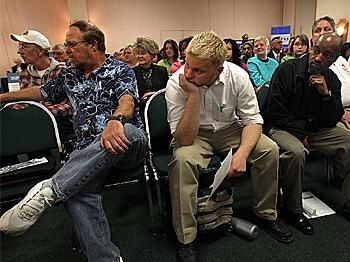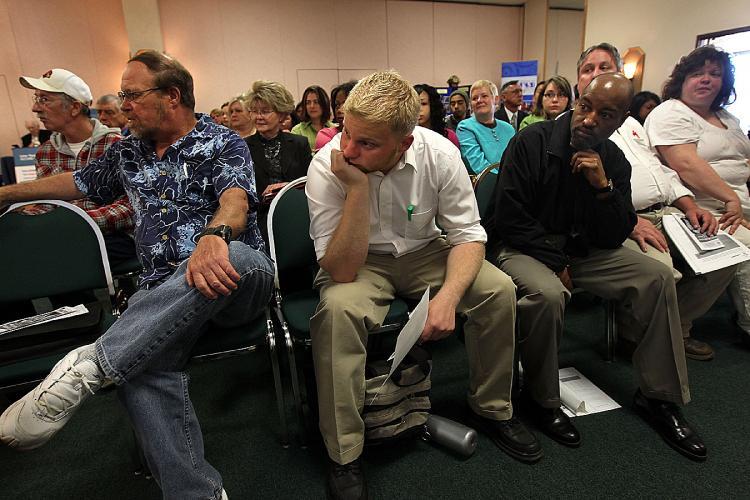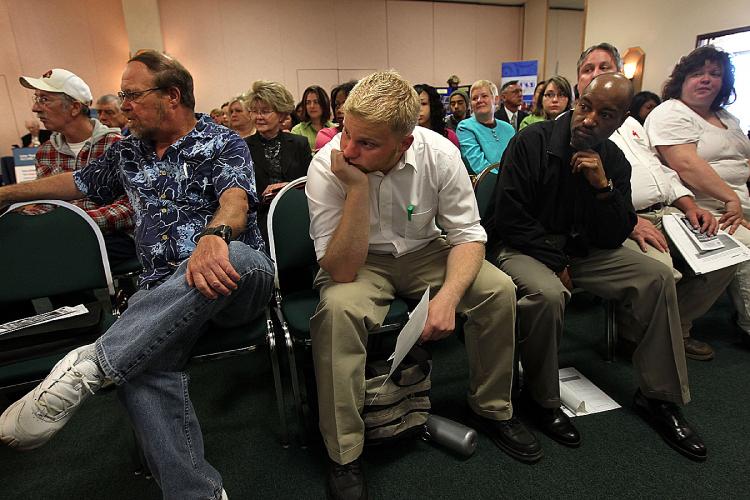“The latest employment report provides the strongest indicator to date that the U.S. job market has begun to rebound. After more than half a year in which the nation’s economy grew but payroll employment stagnated or fell, we now see clear evidence that employers are adding to their payrolls,” writes Gary Burtless, senior fellow in economic studies at The Brookings Institution.
He suggests that not only the health care sector is booming, but manufacturing and other sectors have started to hire, saying that “the latest report suggests that job gains are now more broadly distributed across the private economy.”
Employment Trending Up
In March, the net gain was 162,000 jobs across America, which means that more people were put on the payroll than taken off.
The manufacturing sector—a bellwether of the economy—hired 17,000 workers in March and 45,000 since the beginning of the year. Most jobs were in the industrial equipment and metal products sectors.
The federal government hired 48,000 people for short-term jobs, mainly as 2010 census takers.
About 9.1 million people were working part-time because they couldn’t find a full-time job or their employers cut their hours to keep them on the payroll.
Another BLS report, Job Openings and Labor Turnover, states that there were 2.7 million job openings in February in the country, though it did not provide information regarding how long these jobs have been open and the reason for many not being filled.
Employment experts suggest in a number of publications that many jobs lack qualified applicants and in addition, employers are in no rush to fill them.
During March, close to roughly 4 million people resigned, were laid off, retired, or took another job, while almost the same number were hired, with a difference of 4,000 more people hired.
Out of Work
The unemployment rate of 9.7 percent—15 million Americans—indicates that layoffs have almost come to a standstill when compared to the rates of prior months.Besides the 15 million people who are drawn from the unemployment insurance benefits list, there was another 6.5 million who dropped off that list, consisting of those out of work for more than 27 weeks and who haven’t found a job yet. This list increased by 414,000 people in March.
The BLS reported that another 2.3 million people were “marginally attached to the labor force,” which indicates that they are willing to work, but have not applied for any jobs for about one month before they were surveyed.
In total, there are 1 million discouraged workers—individuals who are no longer looking for a job. Analysts say that these numbers are circumspect, as it is almost impossible to collect numbers from people who are without a job, as they may have moved or gone on welfare.
Between February 2009 and February 2010, 3.2 million more people lost their jobs than were hired.
Employment Outlook
U.S. employers are not anticipating much hiring in the second quarter of 2010, according to a recent Manpower Employment Outlook survey.About three quarters of employers will not lay off employees, which should make employees more secure in their positions.
“U.S. hiring activity is still in neutral, but revving toward first gear,” said Jonas Prising of Manpower.
Although the news is positive, there may still be some ups and downs before the economy gets back on track. “It’s moving in the right direction, but it will take some time, with no major speed bumps, before it can accelerate,” Prising said.
Temporary Work Discouraged
Temporary jobs are on the rise for a number of reasons, according to employment experts. The No. 1 reason is that pay can be kept at a minimum and no benefits, such as health insurance or vacation days, must be paid.“While the U.S. economy struggles, one form of employment is on the rise: Temporary jobs. Increasingly America relies on these contingent employees—or disposable workers,” according to a short note on the PhysOrg.com website, a research and technology news service.
U.S. firms employed 2.01 million temporary workers per day during 2009, according to an American Staffing Association (ASA) report. The most temporaries were hired during the last quarter, 2.2 percent more than during earlier quarters.
While temporary jobs might be helpful for many whose unemployment check has run out, to accept such work is not advisable, according to an Upjohn Institute working paper.
“Temporary-help jobs offer rapid entry into paid employment, but they are typically brief and it is unknown whether they foster longer-term employment,” the Upjohn research shows.
The paper compares people who accepted temporary jobs versus going through a Work First Program (WFP). A WFP is designed to get prospective or existing welfare recipients off welfare and back into the workforce.
The WFP is an outgrowth of the Wagner-Peyser Act of 1933, which called for a service that puts people back to work and helps through training, retraining, job placement, child care, career services, and other types of support.
States that have highly effective WFPs are Michigan, New Jersey, North Carolina, Virginia, and Washington.
While people who have made use of the WFP were able to land long-term positions at satisfactory pay, those who chose temporary employment had intervals of no employment, had to accept often minimum or low pay, and had a hard time finding that full-time job.






